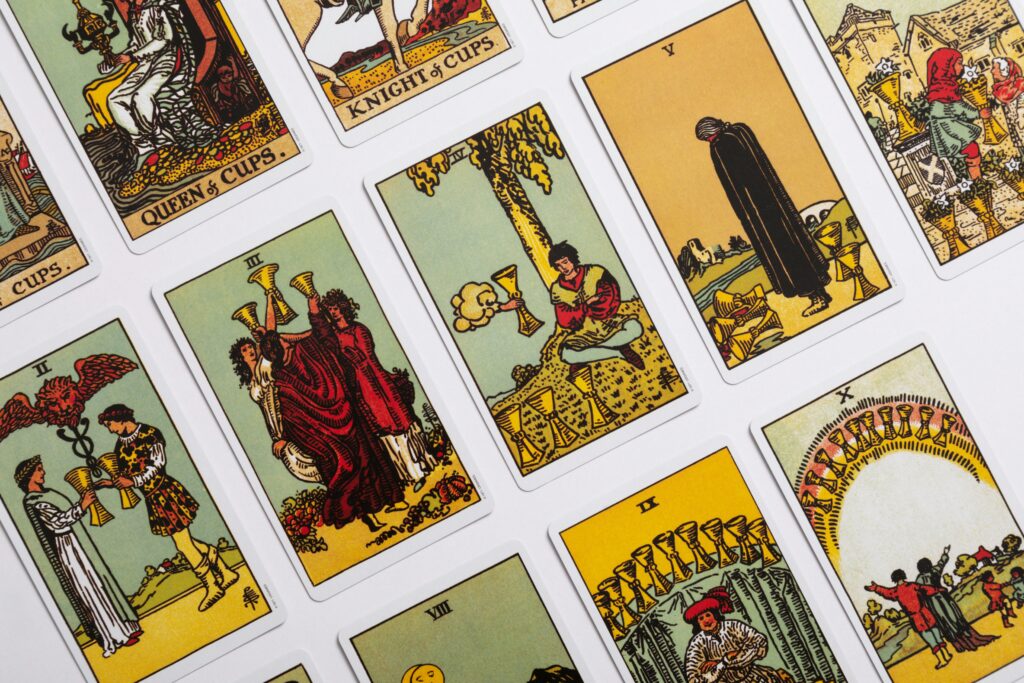
When you think about tarot cards, your first thought is likely to be about divination. But have you ever thought about the tarot as a magical writing tool?
I have had a set of tarot cards since I was 16 and, like most people, I’ve used them to connect to my intuition to figure out challenges, set intentions and explore likely outcomes. It is only in the last few years that I’ve discovered they make an excellent writing tool. In fact, one could almost say that they help you divine the heart of your story. Whether it be identifying themes and ideas, interesting and multifaceted characters, or navigating plot, the tarot offers a wealth of possibility. It's not surprising, really. After all, the tarot is a natural storytelling tool since it already has a story and cast of characters weaved into its fabric. From the main characters in the major arcana, to the kings and queens and their court in the minor. Each represents an archetype that we are familiar with. Let’s take the Fool as an example. This young brash adventurer is one who upsets the status quo by boldly stepping into the unknown. Much like Joseph Campbell’s The Hero’s Journey, The Fool has many a winding path to cross, filled with trials and tribulations before they achieve victory and mastery. Think Odysseus, the hero from Homer’s epic poem The Odyssey. The same can be said of the anti-hero story model where your protagonist is more like The Devil than saviour. Loki of the Marvel franchise, for example, is morally ambiguous and isn’t necessarily on any side apart from his own. Using the tarot to help you write can make the whole process richer as it stimulates your creativity and imagination with possibilities that you might never consider. Like the Temperance card of the major arcana (which I pulled before writing this piece), it can help you get into the flow of your writing faster, overcome writer’s block and add a sense of fun to your writing. So where do you start? First, if you haven’t already got a deck, find one that resonates with you. Then learn the basics about the major and minor arcana. The 21 cards in the major arcana explore big life events, whilst the minor adds the finer details to those big initiations. Each deck will come with a small booklet giving you information about each card, but you don’t necessarily need that as the visual imagery on each card can almost speak for itself. I would urge you to trust your intuition and write down what comes to you first before looking in the book. Next, you need to learn how to ask questions. The tarot does not respond to closed questions that lead to a ‘yes’ or ‘no’ type of answer. So, asking open questions (who, what, why, when, where, how) will give you far more information. For example, a closed question such as, ‘Does my protagonist have a secret?’ won’t give you anything useful, whereas, ‘What secret is my protagonist protecting?’ will provide richer rewards and lead to further questions. Below is a list of questions to help you get started: 1. What needs to be included in this scene? 2. What other information can you give me about… 3. What is this character’s flaw or inner conflict? 4. What’s at stake for this character? 5. What is the next challenge that this character faces? 6. Who will this character meet next? 7. How does this character relate to others? 8. How does this character relate to themselves? 9. What is the main theme of the story? 10. What is the major conflict in the story? 11. How does this character get in their own way? 12. What mistakes does my character make? 13. Whose viewpoint should I explore? 14. Where should I start my story? 15. What are my character’s strengths? Before you start your reading, make sure you won’t be disturbed. Also set your intention for the reading. For example, ‘This reading is for the purpose of finding answers to my writing project’. Then shuffle the cards focusing on the question you want to ask. Remember to focus on one question at a time. When you feel you want to stop, do so. You can then draw a card. You might find you want to draw two or three cards and that’s okay – remember to go with your gut. Now write down what initially comes to mind as you look at the card or cards. You might find this stimulates other questions and the drawing of more tarot cards. Don’t overthink it – remember, your first thought will be from your intuition, so trust what you are getting, no matter how ridiculous it might seem. The whole idea is to relax, let go and let your intuition flow. Happy writing until next time, when I’ll share part two of using the tarot as a writing tool with some tarot spreads I’ve adapted. Naz x Want to learn more about navigating the path to becoming a spiritual and wellbeing author? Head on over to Naz's website here. For part two click here.Naz is a published author, literary agent, guest-lecturer on creative writing at Cambridge University and runs writing classes and courses. You can find details of her courses by going to her website and connect with her on Instagram.


Join the Academy and learn from some of the best spiritual
and wellbeing teachers in the world
Join the Academy and learn from some of the best spiritual
and wellbeing teachers in the world
Join the Academy and learn from some of the best spiritual
and wellbeing teachers in the world
